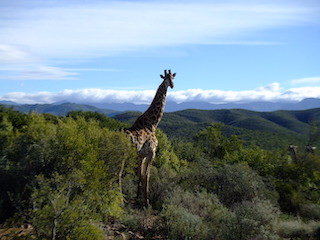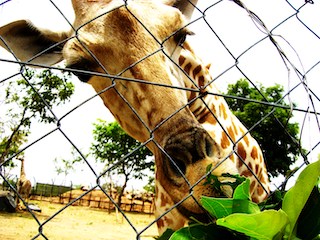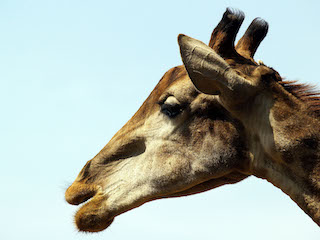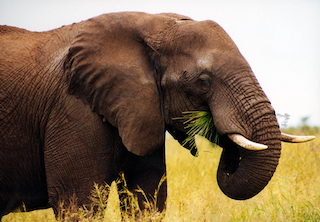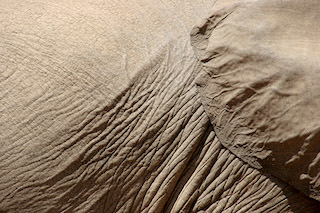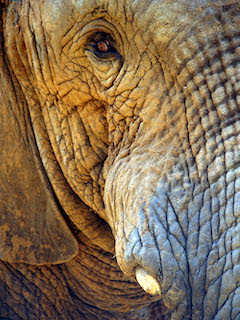-
Totem is symbolic representation of animals that guide our lives. It is an integral part of indigenous cultures and spiritual practices. In this article, we explore the mysterious significance of the giraffe totem, the qualities it represents, and how you can connect with its wisdom to enhance your own journey.
-
In this article, we will explore the 10 most frequently asked questions about giraffes, uncovering interesting facts about their biology, behavior, and unique traits. We will also delve into how the behaviour of giraffes relates to psychological concepts like psychoticism, offering insights into the broader connection between humans and animals.
-
In Kenya, you can use your U.S. or European driver’s license to rent a car. However, you are also required to carry an International Driving Permit alongside your domestic license. The IDP is a translation of your license and makes it easier for authorities to understand your credentials if needed.
-
This in-depth autobiographic article details my incredible journey of finding psychics near me to interpret my recurring giraffe dreams, the life lessons I learned through the process, and the profound ways in which this experience changed my perspective on self-awareness, personal growth, and the nature of dreams and many more.
-
In this in-depth article, we will delve into the mysterious significance of giraffes within the realm of spirituality. We will explore their symbolism in different cultures, their connection to personal growth and our transformation, and how the giraffe’s energy can help guide us toward a more enlightened and balanced life.
-
Mediums, who are gifted with the ability to communicate with spirits or interpret spiritual messages, can decode the symbolism of giraffes in both waking life and in dreams. We explore the symbolism of giraffes, their meaning across different cultures and traditions, and how mediums can help you interpret their significance.
-
A medium can communicate with higher realms or energies and can help interpret dreams. In this article, we will explore the various meanings of giraffe dreams, how they might be interpreted by a medium, and how you can connect with this symbolic animal to gain deeper insights into your life.
-
We explore the meaning of giraffe spirit animal and how it can offer guidance in different aspects of life. We will also delve into how a psychic interprets the presence of the giraffe as a spirit animal and how you can connect with its energy for personal growth and clarity.
-
We will explore giraffe symbolism in dreams and how psychics can provide deeper insight into the meaning behind encountering a giraffe, either in real life or within your dreamscape. We will dive into what giraffes represent, the interpretations they carry, and how psychics can help you decode these powerful messages.
-
Elephants are among the most revered animals. Elephants symbolize a wide range of values, from leadership and community to memory and ancestral connection. Their presence in African culture is not just about their physical attributes but also their deep connection to the natural world, their communities, and their enduring legacy.
-
In the realm of spirituality, the symbolism of the elephant carries powerful messages that resonate with individuals seeking guidance and personal growth. If you have ever felt drawn to the elephant spirit, you are not alone. Many turn to clairvoyants to explore the significance of elephant symbolism in their lives.
-
The influence of elephant as a totemic symbol can be explored through the universal traits. It embodies strength, wisdom, protection, and the deep connections to nature and community. Understanding the significance of the elephant involves examining its symbolism in traditions and how they resonate with indigenous peoples across North America.
-
When an individual’s spirit animal is the elephant, it can offer valuable insights. In this article, we explore the behavioural characteristics of people whose spirit animal is elephant, while also addressing the psychological concept of psychoticism, and how it relates to the compassionate and balanced nature of the elephant spirit.
-
As I embarked on my path to understanding the elephant spirit animal and its symbolism, I turned to the guidance of psychics near me. This journey not only opened my eyes to the profound symbolism of the elephant but also to the importance of seeking spiritual guidance from trusted sources.
-
Elephants are among the most revered animals in spiritual traditions around the world. Known for their intelligence, emotional depth, and extraordinary strength, these majestic creatures hold profound spiritual significance. This article explores the 10 most frequently asked questions about elephants, with a focus on their symbolic meanings across various cultures.
-
Mediums, those who can communicate with the spirit world, often interpret the appearance of elephants as messages from the other side, offering guidance, protection, and insight. In this article, we will explore the mysterious significance of elephants, their symbolism in different cultures, and how mediums interpret dreams their spiritual meaning.
-
If an elephant appears in your dream, it may carry messages related to your life or spiritual path. Mediums and dream interpreters often see such dreams as messages from the subconscious or even the spirit world. This article will explore the meaning of elephant dreams and how mediums interpret them.
-
If an elephant has appeared in your dreams, it could be a sign that the elephant spirit animal is calling you to pay attention to your spiritual path. In this article, we will explore the symbolism of the elephant spirit animal and how it can guide you toward deeper insights.
-
This article explores the significance of elephants as spiritual symbols and how psychics interpret their presence in the lives. We will delve into the historical, cultural, and metaphysical meanings behind elephant symbolism and how psychics use this imagery to guide their clients on a path of self-discovery, healing, and transformation.
-
In various African cultures, the crocodile holds a significant place in spiritual and religious practices, sometimes being revered as a sacred animal. In this in-depth article, we will explore the meaning of crocodile spirit worship in African cultures, its spiritual significance, and how it continues to shape cultural practices today.

